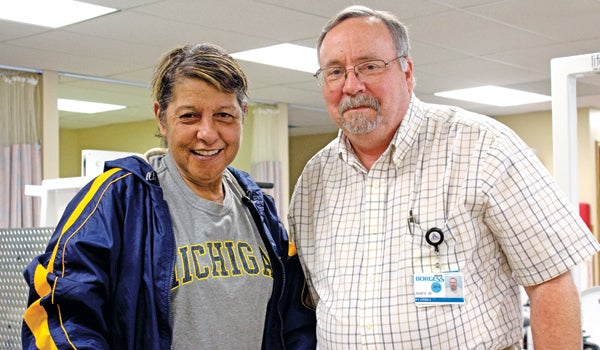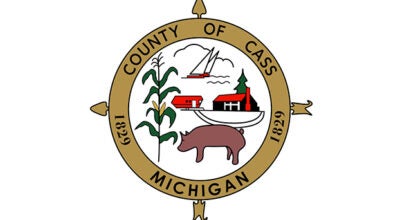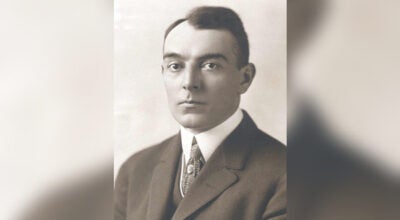Borgess-Lee expands lymphedema treatment program
Published 9:47 am Friday, May 12, 2017

- Union resident Chineeta Sanders and Borgess-Lee Physical/Occupational Therapist John Horton stand inside the Dowagiac hospital’s rehabilitation center Tuesday. The hospital has recently expanded the services it is offering to patients with lymphedema, such as Sanders. (Leader photo/TED YOAKUM)
One year ago, Union resident Chineeta Sanders could barely walk.
Last spring, she began having problems with her right leg, which kept swelling and swelling, no matter what she or her doctor did to try and stop it.
Unfortunately, Sanders’ troubles did not end there.
The inflammation got to the point where her leg started blistering and her skin began to thicken and harden.
After she was admitted to the Saint Joseph Regional Medical Center in Mishawaka, she had her daughter take a picture of her afflicted leg, to let her see just how badly it had worsened.
“I thought I was going to lose my leg,” Sanders recalled after seeing the photo.
Doctors diagnosed Sanders with lymphedema, a condition caused by inadequate drainage of lymph fluid inside the body, which causes painful and potentially dangerous swelling in limbs.
Unfortunately, the disease is not yet curable.
Thanks to the work of therapists, such as the ones at Borgess-Lee Memorial Hospital’s rehabilitation center, living with lymphedema is manageable, as Sanders herself learned.
Earlier this week, the woman stopped by the Dowagiac hospital’s rehab clinic — located next to the main facility on High Street — to visit her former therapist, John Horton, who helped Sanders recover from her lymphedema flare-up. The two worked together for several months to get her condition in order, with the therapist performing massages, applying special bandages and leading her through several exercises to get her condition under control.
“She was a fast study,” Horton said.
Borgess-Lee has recently expanded its lymphedema therapy program, thanks to the addition of a second certified specialist, Naomi Iancu, who is now accepting patients.
The hospital’s rehabilitation center has provided inpatient and outpatient therapy to people with lymphedema since 2009, Horton said. The therapist typically works with between 15 to 20 patients every year, seeing them between two to three times a week over the course of several months, depending on the severity of the patient’s condition.
To treat lymphedema — a condition that afflicts around 2 million in the U.S. — Horton applies a number of different treatments, including therapeutic massages, which helps drain the excess lymph fluid from the afflicted part of the body. Another method is using specialized bandages to compress the afflicted limb and help decongest it.
Exercises such as ankle pumps, knee bends and hip balances help as well, getting lymph circulation to flow better in those parts of the body.
“You have to tailor the program to give patients the treatment they need, but not to the point where it is overwhelming for them and they can’t keep up with it later on in life,” Horton said.
With Iancu’s addition to the treatment program, the two therapists will be able to see a greater number of patients. Due to the nature of the treatments, therapists are required to take 30-minute or longer breaks between appointments, limiting the amount of patients they can see on a given day, Horton said.
“If you’re not tired after giving a massage, you probably didn’t do it right,” Horton said.
While Sanders will live with lymphedema for the rest of her life, thanks to her time at Borgess-Lee, she has not experienced an attack since last year.
“She is better now — not just physically, but emotionally as well,” said her sister, Sharon Tubbs.
To contact Borgee-Lee, people may call (269) 782-8681.





